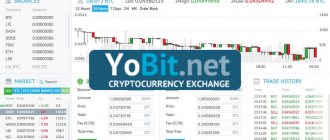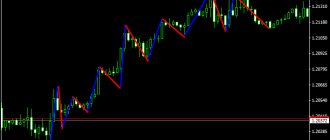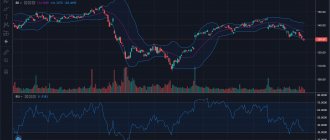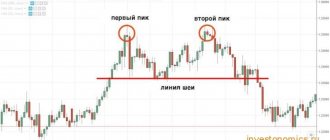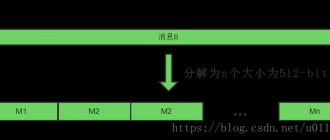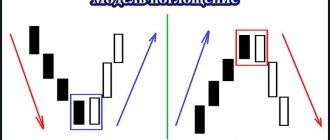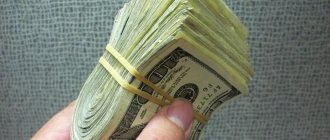From this article you will learn:
- Maker - who is he?
- Takers on the market
- Interaction between taker and maker
- A current example of who's who
- Why different commission?
- Tariffs for takers and makers on popular crypto exchanges
- Conclusion
Maker - who is he?
Some traders operating on trading platforms provide additional liquidity for a specific asset, increasing the interest of other players in it. They are called makers (English make the market). They “make the market” by placing pending orders, the price level of which is higher/lower than existing values.
Limit orders “buy/sell” have price restrictions that contribute to a shift in quotes in one direction—up or down. Thus, makers intensify trading, adding volumes of the exchange instrument to the order book. The exchange welcomes the work of this category of speculators, encouraging them by the absence of commissions on transactions or by minimizing these percentages.
Makers, maker-traders and market makers should not be confused. It seems that the names are almost completely identical, however, the latter are participants in exchange trading with completely different tasks and functions. Market makers are very wealthy players, banks or large investment funds who can manipulate asset prices with their capital to make money.
I also recommend reading:
S&P500 Index – stock index overview. How to invest?
The S&P 500 index is one of the largest and oldest indices on the planet. The total capitalization of the companies included in its basket exceeds […]
Foreign trade activities
When carrying out foreign trade activities, the beneficiary can be either an individual or a legal entity. First, traditionally this is a company that acts as a seller of services or goods. The second is the owner of the bank account through which monetary benefits are received.
In case a company or person owns shares, then they have the right to:
- change the capital of branches and the entire corporation as a whole;
- transfer your shares to another beneficiary;
- choose a nominee director of the company;
- participate in boards of directors;
- adjust the scope of the company's activities.
Note! If the beneficiary has an insurance policy, he will be the recipient of the amount of transfers between the seller and the buyer.
Useful links: How to buy bitcoins for rubles step-by-step instructions, Tinkoff brokerage account conditions, Allocation of expenses.
Takers on the market
Many beginners mistakenly believe that takers are a group of speculators who act in opposition to makers. Of course, this opinion is erroneous. In fact, if an order is placed in the order book, then there should soon be a counterparty who is interested in this offer and will sell it instantly at the set price, that is, at the market value. A little earlier, it was determined that pending orders for the purchase/sale of an asset appearing in the order book are placed by makers. Consequently, the decision to reject or accept such price offers will be considered by other traders. They are called takers .
In fact, the work of a taker is similar to the actions of a maker - they all place orders to purchase or sell an asset. The significant difference here is in the timing of execution of placed orders. Each taker transaction (eng. take, take, take) is implemented by the broker immediately if there is a pending order from the maker with the appropriate conditions at the time the trade notification is sent. A trading operation is carried out at the price available on the market, and the liquidity of the asset decreases due to a decrease in the number of offers from makers.
A few words about publicity
If a company lists its shares on major world exchanges, then the obligation includes providing personal information about the beneficiary.
In some cases, its activities can be hidden by creating offshore companies. However, the authorities have the right to obtain the necessary information through legislation.
On a note! If the corporation is large enough, then information from the beneficiary’s personal file must be indicated on popular Internet resources.
Interaction between taker and maker
In any trading transactions carried out on financial markets, two interconnected parties always participate - a speculator offering an exchange instrument, and a trader purchasing a certain amount of this asset from him. Here, the first one, before concluding a transaction, will place his order in the order book, and the second one, if the conditions coincide with the desires and calculations, will begin to execute this order, opening a short or long position.
In this way, the “maker-taker” scheme is implemented on cryptocurrency exchanges and stock markets. It helps to minimize the difference between orders for the sale and purchase of a traded asset. The result is narrow spreads that increase the level of liquidity of exchange instruments, which is important for the cryptocurrency market, which is characterized by low trading volumes due to the high cost of top coins. The key idea here is to divide traders into liquidity providers and liquidity consumers.
Players who increase liquidity place purchase orders at inflated prices or sell orders at reduced prices. For them, commission fees are characterized by a lower value.
Speculators reducing the ability of cryptocurrencies to be quickly bought or sold reduce liquidity due to instant trades. Typically, the fees charged to takers are offset by favorable asset prices provided by tight spreads.
Nuance. It is the “maker-taker” scheme that causes price fluctuations, trends, recessions, and rapid growth in the value of exchange assets. Takers can be overly active, causing maker traders to try to offer a wider range of prices. The instrument being traded begins to rise in price or lose value. This is how a price jump is formed or a trend is born. Until the interest of the taker and the possibilities of the maker are exhausted, the quote falls or rises.
I also recommend reading:
Copying trades on Forex and binary options. What is it and how to earn it?
Social trading (copying traders' transactions) is a solution that helps both beginners and professionals. Novice traders can earn money without having their own […]
Strategies used
As a rule, market makers always resort to ATS (Automated Trading Systems) and HTF trading (High Frequency Trading).
Both systems require very advanced programming skills. In addition, you will need knowledge in economics, preferably not minimal, in order to sensibly assess the work and potential risks.
Sell-Side Strategy A
Sell-Side is where automated trading systems are used to continually maintain optimal prices and profit from spreads.
It is not uncommon to have a strategy of placing buy and sell orders at the same time. In essence, this is ordinary risk hedging.
HFT or high frequency trading is a type of algorithmic trading characterized by high speed and capital turnover, as well as short asset holding periods.
To become an HFT trader you will need specialized robots and powerful computers, because the main task of high-frequency trading is to conclude many transactions in the shortest possible time.
With HFT trading, market makers must set a quote or last price and keep it updated.
A current example of who's who
If you create an order on the market that matches the parameters of the existing offers, you will get a market order executed. Here, the liquidity of the asset will be taken from trading, therefore, the role of a taker is performed. When a position is opened with a price that is not in the order book, additional demand is introduced into the market and liquidity increases. The deal will be delayed. Because of this, the order book always contains only offers from makers, awaiting immediate acceptance by taker traders.
A good example with a fragment of an improvised Depth of Market:
- Elena sells 1 ETH for $95.25;
- Sergey offers 1 ETH for $94.75;
- Alice buys 1 ETH for $94.15;
- Denis purchases 1 ETH for $93.85.
Alexey appears on the crypto exchange, agreeing to buy an Ethereum coin for $95.50. When he places such an order, his transaction will be executed immediately, since there are Sergey and Elena on the market, whose offers fully comply with the conditions. is a taker here .
If another trader wants to buy ethereum for $94.50, then the trading terminal system will place his order between Alice and Sergey, since no one is offering the crypto coin at the set price yet. This pending order speculator will increase the liquidity of the virtual currency and play the role of a maker .
Is there collusion between MM
Unsuccessful traders believe that market makers' wallets benefit from losing trades. This happens on the Russian market when fictitious brokers conduct a game without access to the stock market for liquidity.
There is no reason for a valid MM to violate the established regulations for the following reasons:
- The market maker is a major player and handles a large number of orders. It is of no interest to him to hold the opposite position on a separate transaction: this increases the risk of losing his positive reputation and the market rate.
- It is easier and more profitable to obtain a stable profit (income) from a spread than to calculate the result of operations, even if the profit size is small.
- Any biased arbitration or collusion will certainly be discovered by market participants, which competitors will certainly take advantage of. MM will lose clients, fall under regulatory sanctions, and may lose its license.
- Doubts about the possibility of expanding the spread to the benefit of the maker are unfounded, since the exchange rate difference is under pressure from supply and demand for the asset.
MM is a major participant in the exchange and can manipulate quotes. But he is opposed by equally influential banks, funds and brokers. This ensures a balance of forces in the financial market.
Why different commission?
Commissions on trading platforms, where traders are divided into functional categories, differ for taker and maker. The logic of the owners of crypto exchanges or stock exchanges is obvious here.
Takers who create market orders take the traded asset out of circulation, reducing its liquidity. For this they are required to pay a large commission, since the exchange is forced to compensate for its temporary losses arising from a short-term decrease in players’ interest in the asset. On cryptocurrency exchanges, as a rule, percentage deductions for a taker order start at 0.16% of the transaction amount.
Makers, on the contrary, attract the interest of traders to financial transactions on the platform, increasing the liquidity of instruments with their pending orders. The exchange is now starting to receive more commissions due to the increasing activity of speculators. Trading platforms value the work of maker traders, so they set minimum or zero commissions for orders. There are often situations when a so-called anti-commission is paid for certain altcoins or securities - there is an additional payment for the transaction. This profit is insignificant, but there are craftsmen who turn this anti-commission into a good extra income.
For example, on the BitMEX cryptocurrency exchange there is often an additional payment for placing orders by makers trading top coins. Thus, on December 18, 2018, the BitMEX platform paid 0.025% for margin trading of perpetual contracts with bitcoin (BTX, an unusual bitcoin ticker). And if the maker opens a long position, then with a leverage of x100, he will still be credited with 0.0148% every 8 hours. All relevant information is officially presented on the main page of the bitmex.com project in the “Commissions” section.
Any deals will not bring a loss to the exchange. Every completed transaction has a maker and taker. For them, the order price is identical. Even the payment to the maker-trader of 0.025% is always compensated by the collection of 0.075% from the taker, plus 0.05% of net profit remains. All calculations are carried out after the position is closed, when the system calculates the actions of the participants in the financial transaction and makes the necessary calculations.
Traders engaged in speculative transactions on cryptocurrency platforms need to be aware of the real seriousness of taker and maker commissions. Even 0.1% of a Bitcoin transaction ($3600) on a pending order will immediately take away $3.6 (240 rubles). If you often trade in the market, then the amount lost just like that adds up to be quite large.
Can the beneficiary be absent?
The beneficiary may not be present in companies conducting non-profit activities. In accordance with current legislation, individuals do not have the right to build a business and receive benefits.
The tasks of such companies include organizing public events, city meetings, and creating unions and associations. Also in the field of charity there are no beneficiaries.
However , there is always money on the balance sheet of non-profit organizations. This is the profit from the activities of the enterprise. It does not go into the hands of the owner, but is directed towards the improvement and development of the organization.
As for financial institutions, there is a turnover of funds in them, so it is impossible to do without a beneficiary.
Tariffs for takers and makers on popular crypto exchanges
Among the most famous and popular cryptocurrency exchanges, the following projects have established different amounts of commissions for takers and makers:
- Bitfinex is an incredibly convenient service that features low fees for traders. Basic figures with zero trading history: taker 0.2%, and maker 0.1%. The official website address is bitfinex.com;
- Kraken is an exchange with a controversial reputation. Not a bad interface, a separate application for trading operations. The commission scheme is also multi-stage, so the first level is charged the highest interest - makers 0.16%, and takers 0.26%. Project address: kraken.com;
- Poloniex is average in terms of quality and technical capabilities. There are many cryptocurrency pairs present. Fiat currency is not provided. First-level speculators (trading turnover < $500,000 per month) pay per transaction: taker-traders 0.2%, and makers 0.1%. The site can be found at poloniex.com;
- BitMEX is the undisputed leader among trading platforms in terms of quality and professional capabilities for peer-to-peer trading of crypto assets. The amount of commission deductions is determined by various factors - the type of virtual currency, the execution of the application extension, the amount of leverage, types of orders, etc. Makers are paid a BitMEX anti-commission of 0.025%. Minimum fees for takers – 0.075%.
Anime characters
The maker of anime characters deserves special attention, since this subgenre is practically the most widespread among all available ones. You can find millions of characters from famous TV series and feature films, which you can dress up in different costumes, equip with different accessories, process and transform the way you want. Considering the fact that anime fans are often literally obsessed with this genre of cartoons, games like this are extremely popular because they bring fans of the genre closer to their adored characters and allow them to transform them the way they would like. Anime character maker can, of course, also appeal to those people who don’t particularly like this genre of animation, because it still offers great opportunities for creativity.
Where to find a job as a history maker
There are vacancies for story creators on the Internet, on special job search sites:
- jobfilter.ru/work/storymaker;
- remote-job.ru/search?search%5Bquery%5D=story maker&search%5BsearchType%5D=vacancy;
- avito.ru/rossiya/rabota?q=story maker.
Before negotiating a job with an employer, carefully study the vacancy. Maybe it doesn't suit your requirements? Next, find the customer’s contacts and interview him.
At the same time, you can use the Yandex service, which will help you find a job. You can also use social networks and freelance exchanges to find customers.
How much does a story creator earn?
Earnings here are individual. Therefore, it is difficult to immediately say who earns how much. We will calculate the story maker’s salary based on his experience, knowledge and the number of completed orders. A story maker earns an average of 17,000-50,000 rubles per month.
This data was taken from this site “jobfilter.ru/rabota/storysmeyker”. The profession of story maker is just developing, few people know about it yet. Take this opportunity to earn more money online.
Mistake 2: Ignoring storytelling
Is storytelling a trend of the 21st century? No: he has been with us exactly since we learned not only to tell stories coherently, but to draw them with charcoal on the walls of a cave. And it will never fade away: people are only interested in people who are alive and imperfect. I develop a personal brand on Instagram and often include personal moments there that have nothing to do with my professional activities. I’m talking about something simple and understandable to everyone – everyone understands that delicious food is much more enjoyable than training, right?
Even the simplest story can be packaged in such a way that the story will be interesting to watch
Beautiful pictures by themselves do not attract attention. People, like hundreds and thousands of years ago, care about history, plot, dynamics, conflict, and this must be included in the process of creating stories. For example, on my story there is a conflict between me... with me.
What should a story maker be able to do?
A story maker must be able to do a lot in his profession in order to earn more money:
- there is a need for video editing;
- there is work with fonts;
- you need to understand the target audience and its problems;
- story maker knows how to create videos and photos;
- knows how to process high-quality images taken, for example, from a phone;
- it is important to understand the main types of trending content in stories;
- and other .
If you master the skills listed above, you will be able to find customers in your profession and increase your earnings.

